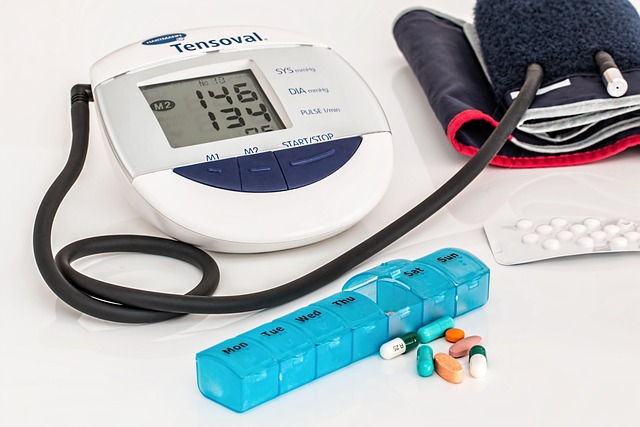Understanding Crohn's Disease: Symptoms, Causes, and What to Expect in 2025
Crohn’s disease is a chronic condition that affects millions. This guide explores the symptoms of Crohn’s disease, including how it manifests in females, the stages of active Crohn’s, and what to expect when living with this condition. View real-life Crohn’s disease pictures and learn about treatment options

Crohn’s disease is a chronic inflammatory bowel disease (IBD) that can affect any part of the gastrointestinal tract, from the mouth to the anus. Unlike its counterpart ulcerative colitis, which primarily affects the colon, Crohn’s can involve any segment of the digestive system and often affects the entire thickness of the bowel wall. The condition typically presents as patchy areas of inflammation with healthy portions in between, creating a distinctive pattern that helps differentiate it from other digestive disorders. As we approach 2025, understanding this complex condition becomes increasingly important for both patients and healthcare providers.
How Crohn’s Disease Affects the Body
Crohn’s disease primarily impacts the digestive system, but its effects extend throughout the body. The inflammation characteristic of Crohn’s can penetrate through all layers of the intestinal wall, leading to complications such as strictures (narrowing of the intestine), fistulas (abnormal connections between organs), and abscesses. Beyond the digestive tract, Crohn’s can manifest as extraintestinal symptoms affecting the joints, skin, eyes, and liver.
The immune system plays a central role in Crohn’s disease pathology. In affected individuals, the immune system mistakenly attacks harmless bacteria, food, and other substances in the intestine, triggering inflammatory responses that damage the digestive tract. This chronic inflammation leads to tissue damage over time, creating a cycle of injury and repair that can result in scarring and complications.
Nutritional deficiencies are common among Crohn’s patients due to malabsorption issues. The inflamed intestinal lining struggles to absorb essential nutrients, leading to deficiencies in vitamins B12 and D, iron, calcium, and zinc. These deficiencies can cause secondary health problems such as anemia, fatigue, bone density loss, and impaired immune function.
Symptoms of Crohn’s Disease in Females
While Crohn’s disease affects both men and women, certain symptoms and considerations are particularly relevant to female patients. Women with Crohn’s may experience unique challenges related to hormonal fluctuations, menstruation, pregnancy, and reproductive health. Many women report flare-ups during menstrual periods, suggesting a potential connection between hormonal changes and disease activity.
Reproductive health concerns are significant for women with Crohn’s disease. Active disease during conception and pregnancy may increase risks of complications, including premature birth and low birth weight. However, with proper disease management and medical supervision, most women with Crohn’s can have healthy pregnancies and children. Medication considerations are also important, as certain treatments may affect fertility or pose risks during pregnancy.
Women with Crohn’s disease may experience delays in diagnosis compared to men. This diagnostic delay can occur because symptoms might be mistakenly attributed to gynecological issues, irritable bowel syndrome, or stress. Symptoms like abdominal pain, irregular menstrual cycles, and fatigue may overlap with other conditions common in women, potentially complicating the diagnostic process.
What to Expect with Active Crohn’s
During an active flare of Crohn’s disease, patients typically experience intensified symptoms that significantly impact daily life. Common manifestations include persistent diarrhea, often bloody; severe abdominal pain and cramping; fatigue; reduced appetite; and unintended weight loss. These symptoms can vary in intensity and may develop gradually or appear suddenly.
The unpredictable nature of Crohn’s flares presents significant challenges. Patients may experience periods of remission with few or no symptoms, followed by flares that can be triggered by various factors including stress, certain foods, missed medications, or infections. This unpredictability makes planning difficult and can affect work, social activities, and overall quality of life.
Treatment during active Crohn’s focuses on reducing inflammation and managing symptoms. Approaches typically include anti-inflammatory medications, immunosuppressants, biologics, antibiotics, and in some cases, surgical intervention. Nutritional support may also be necessary, particularly if malnutrition or significant weight loss occurs. As we look toward 2025, treatment protocols are expected to become increasingly personalized based on disease behavior, location, and individual patient factors.
What Crohn’s Disease Pictures Can Show
Medical imaging plays a crucial role in diagnosing and monitoring Crohn’s disease. Endoscopic images can reveal the characteristic patchy inflammation, ulcerations, and cobblestone appearance of the intestinal lining. These visual findings help differentiate Crohn’s from other inflammatory bowel conditions and guide treatment decisions.
Cross-sectional imaging techniques such as CT enterography and MR enterography provide detailed pictures of the small intestine, which is often difficult to visualize with traditional endoscopy. These imaging modalities can show bowel wall thickening, areas of stricture, fistulas, and abscesses—complications that significantly impact treatment approaches. As imaging technology advances toward 2025, we can expect even more detailed and accurate visualization of disease activity.
Capsule endoscopy, where patients swallow a small camera that captures images throughout the digestive tract, offers another valuable perspective. This technology allows visualization of areas of the small intestine that are difficult to reach with conventional endoscopy. The images can reveal small ulcerations and areas of inflammation that might otherwise be missed, providing a more complete picture of disease extent.
Anticipated Treatment Advances for 2025
The treatment landscape for Crohn’s disease is expected to evolve significantly by 2025. Precision medicine approaches are gaining momentum, with treatment decisions increasingly based on individual genetic profiles, disease behavior, and biomarkers. This personalized approach aims to match patients with the therapies most likely to be effective for their specific disease characteristics.
Novel biologic therapies targeting specific inflammatory pathways are in development. Unlike current biologics that primarily target tumor necrosis factor (TNF), these new agents focus on different immune system components involved in intestinal inflammation. Dual-targeted biologics that address multiple inflammatory pathways simultaneously show particular promise for patients with treatment-resistant disease.
Microbiome-based therapies represent another frontier in Crohn’s treatment. Research into the gut microbiome—the community of bacteria living in the digestive tract—has revealed significant differences between healthy individuals and those with Crohn’s. Emerging treatments aim to restore a healthier bacterial balance through fecal microbiota transplantation, prebiotic/probiotic formulations, and bacteriophage therapy.
Managing Crohn’s Disease Long-Term
Long-term management of Crohn’s disease requires a comprehensive approach that extends beyond medication. Regular monitoring through clinical assessments, laboratory tests, and imaging helps track disease activity and detect complications early. This proactive surveillance strategy is expected to become more sophisticated with advances in biomarker testing and non-invasive monitoring technologies.
Lifestyle modifications play an important supportive role in Crohn’s management. While no single diet works for all patients, many benefit from identifying and avoiding personal food triggers. Stress management techniques, adequate sleep, regular exercise appropriate to individual capabilities, and smoking cessation are all important components of a holistic management strategy.
Patient education and support networks have proven valuable for long-term disease management. Understanding the condition, treatment options, and self-management strategies empowers patients to participate actively in their care. Support groups, both in-person and online, provide emotional support and practical advice from others living with the condition. As we move toward 2025, digital health tools are likely to play an increasing role in patient education and self-management.
This article is for informational purposes only and should not be considered medical advice. Please consult a qualified healthcare professional for personalized guidance and treatment.




